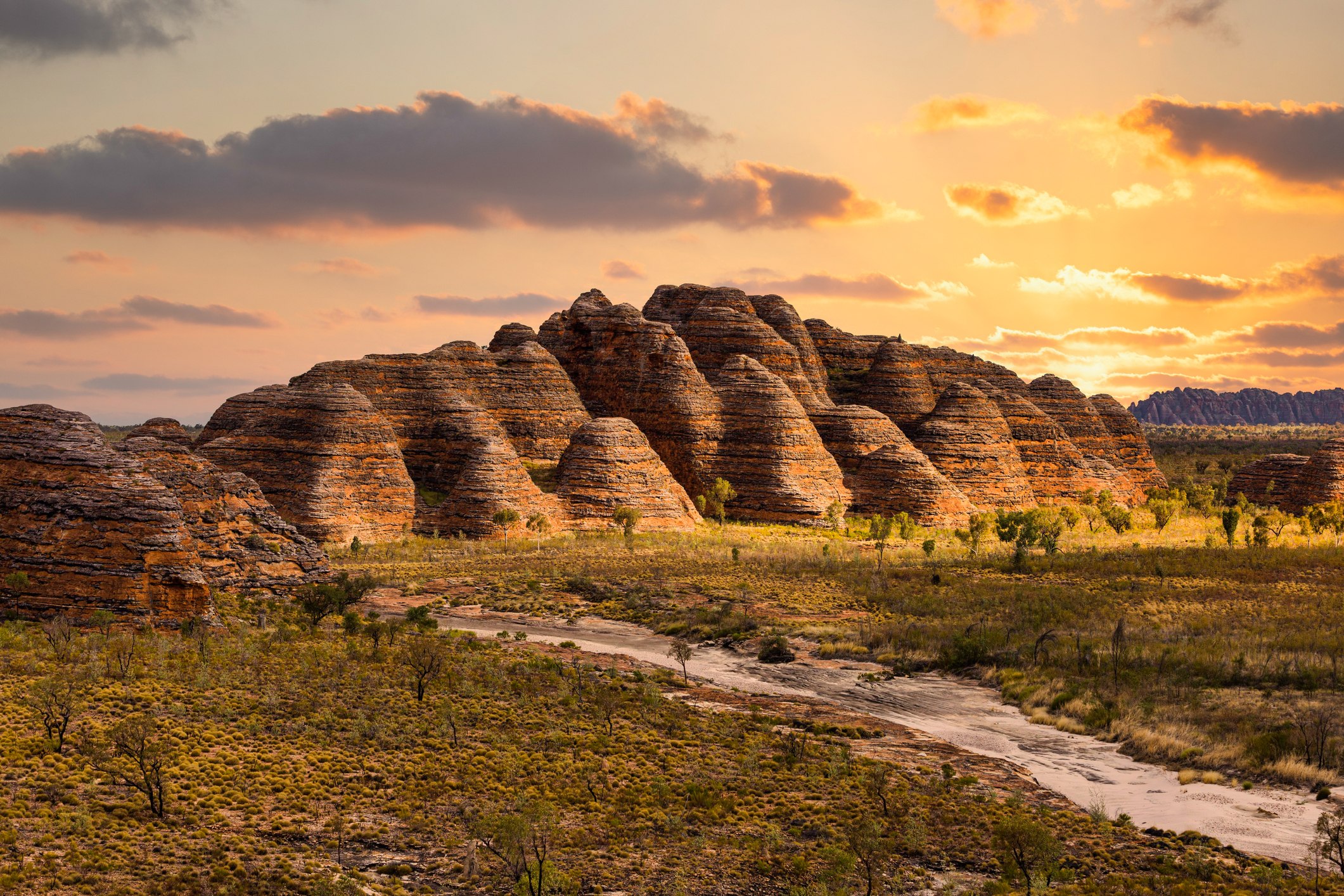Reading time: 5 minutes

See more of Australia
Ever wanted to see the outback of northern Australia? Now is the time to go. From May to September is the dry season without the searing heat of summer.
It's a serious business traveling in the outback. Nearly every year some inexperienced traveller dies in the Kimberley, Pilbara or Northern Territory, and sadly, it's usually completely avoidable.
Take the Tanami Track, for example. It stretches for more than 1000 kilometres from Alice Springs to Halls Creek in the east Kimberley with no towns along the way and only two fuel outlets. It's mostly unsealed and regularly becomes pitted and potholed in winter, when overnight temperatures can dip below zero, and impassably muddy and flooded in summer.
But taking a few simple precautions will make your journey enjoyable and have you back home in one piece after an unbelievable experience. With the help of some outback locals and experienced travellers I've put together a list of what to do.
How to stay safe in the Aussie outback
Tell someone of your plans and arrange to telephone them when you arrive safely at your destination. Ask them to notify the police if you don't call by the agreed date.
Make sure you have plenty of time. Don't make the mistake of trying to see everything- the outback has a way of punishing travellers in too much of a rush. Take your time and enjoy the experience.
Choose your vehicle carefully. If it is not a Toyota Land Cruiser or Hi-Lux there's a good chance parts won't be available in the nearest town, and you could be stranded for days or even weeks waiting for them to arrive.
You will need a minimum of two spare tyres, a wheel brace and a decent kangaroo jack. Practice changing a tyre before you head off and make sure you are confident at it.
Also, take along the longest tow rope or snatch strap you can afford- there are plenty of people happy to tow you out of trouble, but you can't assume they have the equipment to do so.
Take a couple of jerry cans of fuel, even if your fuel tank has extra capacity. There are helpful bush mechanics who can make running repairs to a damaged fuel line or fuel tank but don't expect a stranger to give you any fuel.
Assume that you have a fair chance of breaking down or getting bogged. Unless you are a very experienced bush traveller stick to the well-travelled roads, where you can be sure someone will be passing at least every few hours.
The golden rule of outback travel is, if you do find yourself stranded, stay with your vehicle until help arrives. So many people have perished from dehydration after walking just a few kilometres from the safety of the car in the heat of the day- and losing just a small amount of water from your body makes you faint and delirious. A vehicle provides shade on a scorching hot day, a certain amount of drinking water will condense on to it at night, and it is easily seen from the air.
Speaking of water, you need to pack plenty of this. You can never carry too much water.
Another essential is tinned food and matches or a lighter. You need to be able to make a fire if you break down to discourage dingoes and mosquitoes, and keep yourself warm at night. Collect a little firewood as you see it along the road.
Snakebite is another major killer. As long as you can see the bare ground, you can avoid snakes. Never walk through long grass or ground covered by leaf litter.
Finally, don't forget domestic travel insurance. Yes, you do need it. Medical expenses (heaven forbid you get any) are covered by Medicare, and the cost of your rescue, if you should need it, is also covered by police and emergency services. But domestic travel insurance covers you for cancellation costs, lost luggage and rental car excess. Have a look at what it can do for you here.